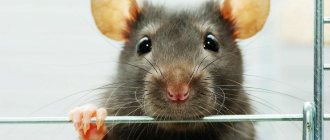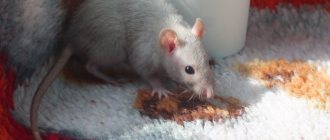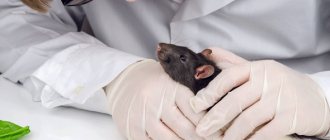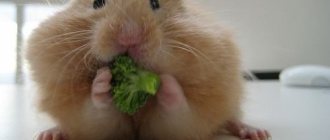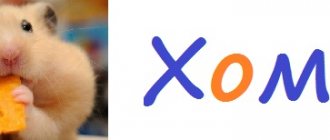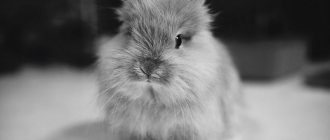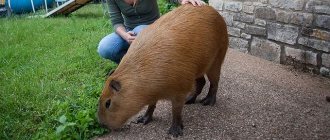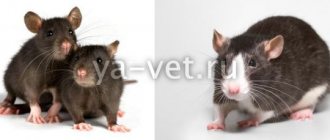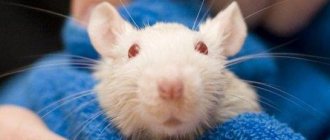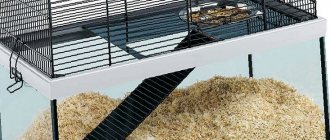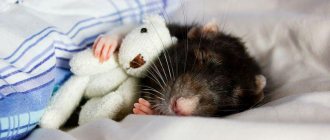There are a large number of colors and they are all divided into: Self, Ticked, Silvered, Pointed and Marked colors.
Quick navigation
Uniform colors: Black, Blue, Russian Blue, Powder Blue, Mink, Mock Mink, American Mink, Platinum, Beige, Albino, Champagne, Russian Silver/Russian Silver, Russian Dove/Dove, Chocolate/Chocolate, Russian Beige/Russian Beige, Caramel, Lilac/Lilac.
Ticked colors: Agouti, Blue Agouti, Platinum Agouti, Amber, Cinnamon, Fawn, Topaz, Pearl, Cinnamon pearl, Platinum Pearl blue.
Silver colors: Silvered Black, Silvered Blue, Silvered Mink.
Combined colors: Seal Point Siamese / Siamese, Black Eyed Siamese / Siamese with black eyes, Blue Point Siamese / Siamese blue, Russian Blue Point Siamese / Siamese Russian blue, Golden Siamese, Himalayan / Himalayan, Black Eyed Himalayan / Black-eyed Himalayan, Burmese / Burmese/Burmese, Sable Burmese/Sable Burmese/Sable, Wheaten Burmese/Wheat Burmese.
Marked colors: go to the description of markings.
Uniform (self) colors
Uniform colors are characterized by the fact that all hairs have the same color and tone.
Black
Author: runa
Smooth, rich coal-black color, without inclusions of other colors or ashy tint. The hair is black from root to tip, the undercoat is as dark as possible. The eyes are black.
Genetics: aa
—
Blue
Author Kulikova N.
An even gray color with as strong a blue tint as possible. From steel blue (English or British Blue) to very light bluish blue (Slate Blue). The hair is dyed along the entire length. The eyes are black.
Genetics: aa ggaa
Russian Blue
Author Elizaveta Milanovich
A very dark grey-blue color with a metallic sheen; due to the fact that the pigment is concentrated in the spine of the hair, there is a slight effect of unevenness and ticking of the color, but this is not a disadvantage of the color. The hair is colored along the entire length to the base, the undercoat is dark blue. The color of the paws corresponds to the color as a whole. The belly is gray-silver-blue. The eyes are black. In general, this color resembles that of Russian Blue cats.
Genetics: aa dd
Powder Blue/Smoky blue
Light dove-blue color. The base of the hair and undercoat are light silver in color. The eyes are black (or dark ruby).
Genetics: aa gg (based on bleached undercoat)
Mink
Author Kulikova N.
Smooth brown-gray color with a bluish tint. The hair is dyed along the entire length. Eyes black or dark ruby.
Genetics: aa mm
Mock Mink/American mink
Author Kulikova N.
Warm rich brown color. The eyes are dark ruby, in harmony with the color of the coat as a whole.
Genetics: aa mm Rr or aa momo (where mo is an American mink) - a modification of the mink color
Platinum/Platinum
Photo by Listik
The color is light gray with an icy blue tint. There should be no cream, brown or strong blue tints. The hair is dyed along the entire length. Eye color varies from light ruby to almost black. A bright ruby eye color is preferred, but should not be too light.
Genetics: aa gg momo (where mo is an American mink, i.e. mock mink)
Beige/Buff/Beige
Warm color of slightly tanned skin (to warm magnolia for buff). The color should not be dull, excessively yellow or gray. The hair is dyed along the entire length, to the base. Eye color is ruby to black, the darkest possible eye color is preferred.
Genetics: aa rr
Albino/Pink Eyed White/Albino/White with red eyes
Author: runa
Pure, bright, brilliant white color. The hair should be snow-white along its entire length. The color of the belly and fur on the paws is white. The eyes are bright, light red (pink).
Genetics: CC or a combination of several lightening genes (for example, Siamese + red-eyed...).
Champagne/Cream/Champagne
Very light, slightly pinkish beige color. Shouldn't be too yellow or too grey. The hair is colored evenly along its entire length. The eyes are pink.
Genetics: aa pp
Russian Silver/Russian silver
Katerina Vantala
The main color is a delicate gray-blue with a slight purple tint. The fuzzy light ripples or subtle pseudoticking common to all Russian Blue-based colors is the norm for this variety. The hair is colored unevenly, the pigment is concentrated in the upper part. The color of the undercoat is as dull as possible. The presence of brown, yellow or pinkish tints is a disadvantage. Eye color – black.
Genetics: aa dd gg
Russian Dove/Dove (Not standardized)
Photo by Listik
The main color is warm, pinkish-gray. The fuzzy light ripples or subtle pseudoticking common to all Russian Blue-based colors is the norm for this variety. The hair is not uniformly colored, the pigment is concentrated in the upper part. The color should be significantly different from platinum (Platinum) or lilac (Lilac). The color of the belly corresponds to the color as a whole, the color of the undercoat is dull gray to the base. Eye color – black or dark ruby.
Genetics: aa dd mm
Chocolate/Chocolate (Not standardized)
Author: runa
Genetics: aabb
—
Russian Beige/Russian beige (Not standardized)
Author alisa_v_strane
Genetics: aaddrr
Caramel (Not standardized)
Photo by Listik
At the moment there is no description of the color.
Genetics: aabbrr
—
Lilac/Lilac/Blue Chocolate (Not standardized)
Author: runa
Dove gray mixed with brown. Eyes dark ruby or black.
Genetics: aa bb gg — — — — — — — — —
—
Perception and orientation
Panoramic vision helps rodents perceive the environment and navigate it. With its help, they cover a large area, which helps to avoid dangers. On the one hand, this can be considered a plus, and on the other, a minus, since this location of the eyes interferes with the perception of depth.
Since rats have very poorly developed binocular vision, they cannot accurately understand how far away an object is. To move safely, they learned to use their nose and receptors located near their whiskers, the so-called vibrissae.
Ticked colors
Ticking is the uneven coloring of hairs, that is, there are zones on the hair that are colored different colors. Among the zonally colored hairs, uniform guard hairs are evenly interspersed.
The most native and natural color for rats is “agouti” - just ticked.
Agouti/Agouti
Author Svetlana Levachova
Rich chestnut color, guard hairs are black. Short and medium-length hairs should have a yellow-orange (preferably as warm a shade as possible) band. The base of the hair is dark gray. The tips of the hairs are black. The belly is silver-gray. The eyes are black.
Genetics: A-, no mutations
Blue Agouti/Opal/Blue Agouti
Author: runa
Each hair is gray-blue at the base, with a reddish-brown band at the top of the hair. The guard hairs are light blue in color. The color of the paws matches the color as a whole. The belly is light gray-blue interspersed with silvery hairs. Eye color - black.
Genetics: A/- gg
Platinum Agouti/Platinum Agouti
A vibrant mix of light gray and cream with an even icy blue tint. The base of the hair is light blue. Each hair is marked with a cream belt. The belly color is light silver. Paw color is light gray. Eyes from light to dark ruby.
Genetics: Aa gg momo (mo - American mink, i.e. Mock Mink)
Amber
Author shumel_ka_mysh
Light yellow-orange color, each hair is marked with a silver-beige belt (ivory color). The guard hairs are silvery. The undercoat color is cream. The belly color is light beige. Eyes are pink. Preference is given to rats with the lightest eyes.
Genetics: A- pp (pink eye agouti)
Cinnamon/Cinnamon
Author Elena Masenkova
The main color is reddish-brown interspersed with chocolate guard hairs. Short and medium-length hairs are marked with a bright golden-red belt. The base of the hair is medium intensity gray-brown. The color of the paws matches the color as a whole. The belly color is silver-gray, like the agouti, but in a lighter variation. Eyes black or dark ruby.
Genetics: A/- mm (Mink Agouti)
Fawn/Dark Topaz/Orange/Fawn
Author Kalabina Vilia
Rich golden brownish-orange color, as bright as possible, with uniform inclusions of silver guard hairs. The ticking is weakly expressed, of the same red-golden hue. The undercoat and base of the hair are light gray or bluish in color down to the base. The belly is creamy silver. The color of the back and sides should be uniform. The boundary between the color of the back/sides and belly should be clear. The base color should not appear dusty or greyish. The eyes are dark ruby, the darkest possible eye color is preferred.
Genetics: A/- rr
Topaz/Topaz
Author Olga Morozova
A color similar to the fawn color, but less intense and with a lighter, duller undercoat.
Genetics: A- rr + other lightening genes
Pearl/Pearl
Author Elizaveta Milanovich
Very light silver color, transitioning to a creamy base color. The tip of each hair is lightly marked with light gray. Gray can be a warm shade and sometimes even closer to lilac in tone. The belly color is light creamy silver. Eye color - black (or dark ruby, depending on modifications).
Genetics: aa mm Pepe (dominant) or aa momo pepe (where mo is American mink; it is likely that the pearl gene behaves as a recessive gene in combination with American mink).
—
Cinnamon pearl/Pearl cinnamon
Author: runa
The coat color is based on a combination of three colors (from the base of the hair upward): cream, bluish-gray and orange. The guard hairs are silvery. General impression of color: golden with a silver tint. The belly color is light silver-gray. The color of the paws matches the color as a whole. The eyes are black (or dark ruby depending on modifications).
Genetics: AA mm Pepe or Aa momo pepe
—
Platinum Pearl/Pearl Blue
Author Kulikova N.
Light creamy gray color with a blue tint. The tip of each hair is marked blue-gray. Gray can be a warm shade and even sometimes closer in tone to lilac. The gray-blue color of the upper part of the hairs transitions to the cream color of the base of the hair and undercoat. The belly is creamy bluish-gray. The eyes are black (or dark ruby, depending on modifications).
Genetics: aa mm gg Pepe (dominant) or aa momo gg pepe (where mo is American mink; it is likely that the pearl gene behaves as a recessive gene in combination with American mink).
Grooming
They constantly need to comb their white fur, and they also need to be washed constantly. To comb the rodent, use a toothbrush, and be sure to have a soft one. While combing, you will have to hold the rodent with your thumbs and forefingers.
If you find yellowness in your pet's fur, then this is a reason to worry. It is possible that your rat is sick and is unable to care for itself. Important! You should not risk the animal's psyche if you decide to clean the fur by washing it in a basin. You can simply wet cotton pads and wipe your pet's fur. After the procedure, you need to wipe the rodent dry.
Place the cage with the animal away from direct sunlight, as white rats are afraid of bright sunlight.
Silvered colors
Silver can be any of the recognized colors, both solid and ticked. A distinctive feature of the colors of this section is the alternation of silver and colored hairs in equal quantities. Each silver hair should be as white as possible, although a colored tip is acceptable. Silver colors should give an overall impression of sparkle and shine. If there are a few white hairs interspersed, the color is not considered silver. The silveriness must be clearly expressed so that the silver color cannot be confused with pearl (Pearl) or any homogeneous (Self).
The belly color of silver agoutis and cinnamons should be judged according to the standard of homogeneous agoutis and cinnamons, but in a lighter variation. The belly color of other silver varieties should be consistent with the color as a whole.
Silvered Black
Dark charcoal color, as black as possible, with even interspersed silver hairs throughout the body. The eyes are black.
Silvered Blue
Gray-blue color with silvery-white hairs evenly distributed throughout the body. The undercoat is light bluish to almost white (as light an undercoat as possible is preferred). The eyes are black.
Silvered Mink
Smooth gray-brown color with a blue tint. The number of silvery and non-silvery hairs is equal. Each silver hair should be as white (or creamy silver-white) as possible, although a colored tip is acceptable. The eyes are black.
How to communicate with a decorative rat?
Rats have always been considered social animals. Based on this, they need communication with humans more than other representatives of the animal world. If a person decides to get a decorative rat, then it is better to bring a couple of same-sex animals into your home. This way, the rats will be more interested in each other and also more fun to watch. But if the roof lives alone, then it needs to be given increased attention. You need to set aside about 40 minutes a day to communicate with her. Let your pet out of the cage more often, since the rat loves to walk and ride on its owner’s shoulder.
Combined (Pointed) colors
These include colors consisting of a combination of two or more colors (except white) distributed over the body in accordance with the standard.
This section includes: Siamese colors (Shaded) - Himalayans, Siamese, Burmese, as well as merle color variations (Merle).
Seal Point Siamese
The main color is beige, gradually darkening on the rump in the direction from the loin to the tail and from the belly to the upper back; The darkest color is at the base of the tail. The tail is colored along its entire length. Darkly colored brown markings are also on the muzzle (up to eye level or slightly more), ears, front and hind legs (up to the elbow and ankles). There should be no sharp boundaries between the colored areas and the beige color of the body. There should be no white or very light areas on the body, legs or tail. The eyes are red to light ruby.
Genetics: c(h)c(h)
Black Eyed Siamese/Siamese with black eyes
author unknown
A variety of color variations are possible, just like the Siamese with red and ruby eyes. The color distribution follows the same pattern. Eye color is black.
Genetics: Be- c(h)c(h) (two copies of the Himalayan gene plus one copy of the black eye gene)
—
Blue Point Siamese
Author Kulikova N.
The main color is silver-beige, gradually and evenly darkening on the rump. The darkest rich blue color is at the base of the tail. The tail is colored along its entire length. On the muzzle the darkening goes towards the nose. Dark blue markings should also be present on the ears, front and hind legs. There should be no sharp boundaries between the areas painted in rich blue and the silver-beige color of the body. There should be no white or very light areas on the body, paws or tail. The eyes are ruby to dark, almost black.
Genetics: c(h)c(h)gg
Russian Blue Point Siamese
Author Anna Rudakova (tigra)
The main color is beige, gradually and evenly darkening on the rump; The darkest brown color is at the base of the tail. The tail is colored along its entire length. Darkly colored markings of a rich brown color should also be on the muzzle (to eye level or slightly more), ears, front and hind legs (to the elbow and ankles). There should be no sharp boundaries between dark-colored areas and beige body color. There should be no white or very light areas on the body, legs or tail. The belly is light beige. The eyes are red to light ruby or black.
Genetics: c(h)c(h)dd
Golden Siamese
Author Budnikova Elena
There is no information at the moment.
Himalayan/Himalayan
Author: runa
The main color is white, without shades of other colors or spots, uniform throughout, with markings of a rich dark brown color. The eyes are red. Painted areas: nose - the mark does not rise above the eyes; ears - the coloring does not extend beyond the boundaries of the ears and does not extend onto the head; the front legs are colored no higher than the elbows; hind legs - coloring does not extend beyond the ankles; the tail is colored along its entire length, the mark does not extend beyond the base of the tail; feet - solid color over the entire surface, without white.
Genetics: cc(h)
Black Eyed Himalayan
Author: dambik
The main color is white with beige markings on the nose, paws and base of the tail. The beige “darkening” does not extend on the face above the eyes, beyond the elbows on the front legs and beyond the ankles on the hind legs. The ears and tail are lightly pigmented. Eyes black
Genetics: presumably c(h)c + black eye gene (BE)
—
Burmese/Burmese/Burmese
Photo by Listik
The main color is a uniform deep brown, without an ashy tint, silvering, interspersed with other colors, with darker points of the same shade. There should be a pronounced contrast between the color of the body and points. The eyes are black.
Genetics: aa c(h)c(h) Bubu, aa cc(h) Bubu
—
Sable Burmese/Sable Burmese/Sable
Author VaKa
Body color is a warm, rich dark brown (otter color) with slightly darker markings (points) on the paws, ears, muzzle, and tail. There should be no dusty tint, silvering, inclusions of other colors or spots. The contrast between the color of the points and the body should not be too strong. The black color in the point color is a fault. The eyes are black.
Genetics: aa c(h)c(h) BuBu, aa cc(h) BuBu
WheatenBurmese/Agouti Burmese/Wheat Burmese
Author: dambik
The body color is sandy, the points should be significantly darker than the main color. The base of the hair is light brown. Short and medium-length hairs have a yellow belt. The belly color is light silver-gray. The eyes are black.
Genetics: A- c(h)c(h) Bubu, A- cc(h) Bubu
— — — — — — —
By body type
Purebred rats are differentiated according to many characteristics. First of all, by type, shape and size.
Standard
Animals of this type have a standard physique. They are slender and agile. The tail of the animal is almost the same length as the entire body and head. The eyes are large and shiny, round in shape, and their color is in harmony with the standard coat color.
Small proportional ears are located at the top of the head. The rodent has fur all over its body, it is shiny and fits well. There are short hairs on the paws and tail.
Light-colored animals have short, velvety fur on their ears. They have long, proportional whiskers that are located on their cheeks. There are also antennae above the eyes, but there are much fewer of them and they are much shorter.
Rodents with other types of fur have short, sparse, and curled whiskers. Standard rats are considered the largest among decorative rodents; their weight can reach 500 g.
Dumbo (Mickey Mouse)
Dumbos are distinguished by the structure of the skull and the shape of the ears, which are located not on the top of the head, but below. Due to this, the animal's head looks slightly flattened and expanded. The ears are rounded and widened.
These rats have two types of them - completely open and with slightly bent edges. Among such animals there may be specimens with a slightly protruding nape, although usually it is barely noticeable. The animal's body shape is slightly wider at the back, but the size is smaller than other breeds.
Manx
This species of rat does not have a tail, and therefore is not particularly valued, as it is considered disabled. The fact is that most of these rats have problems with their hind legs and urinary system. These animals have different colors. Their coat can be wavy and curly.
Rat breed – Manx
Do rodents see colors?
There are two types of light receptors in the human eye:
- reeds (perceive dim light, make it possible to see in the dark);
- cones (catch bright light, distinguish colors).
The rat eye contains the same receptors, but unlike the human eye, they are located at a great distance from each other. This feature is reflected in the perception of color. The retina of a rat eye receives the following types of spectra:
- medium wave;
- walkie-talkies;
- UV.
Rats can only distinguish between green and blue; they do not recognize shades.
Description of the animal
Rats belong to the class of mammals. Body dimensions can be up to 30 cm and weight 300 - 400 g. Animals lead a terrestrial lifestyle. In nature, there are rats that can climb trees. They live in burrows alone or as a family.
In addition to wild rats, there are also affectionate, caring domestic pets. Currently, many interesting decorative individuals have been bred. They communicate very well with people.
Among them it is possible to meet a unique animal without hair - the sphinx or, conversely, curly-haired animals. A rat can be tailless or have a flat tail and ears of different shapes.
A very interesting specimen is the Dumbo rat, whose coat colors can be gray, white or black. And the advantage is the ears. The larger they are, the more valuable the specimen.
The color of a rat is an important criterion when choosing a pet.
In China, Ancient Egypt and Japan, these animals were revered as sacred animals and lived in temples. It was believed that they could predict events.
Which breed is better to choose?
Given such a variety of rat breeds, novice breeders often wonder what type of pet to buy. To make the right choice, you must be guided by the following criteria:
- Price . Among decorative rats there are both expensive and affordable breeds. If the financial situation does not allow you to pay a large sum for a rat, it is better to choose the classic option - the standard.
- Animal size . Breeders who prefer compact rodents should pay attention to varieties such as Dumbo or Manx. If large pets are in favor, the ideal option would be a standard or satin breed.
- Presence of allergic reactions to wool . An ideal option for allergy sufferers would be the Sphinx or Fuzz. Although the latter have fur, it is very short and practically does not grow. But it is better for breeders prone to allergies to avoid Double Rex and Pseudo-Sphinx rats - rodents of these breeds shed heavily.
- Appearance . Quite often, when choosing a decorative rat, buyers focus solely on appearance. The main thing here is to choose the animal that you like most.
- Lifespan . In general, rats do not live long - about 3 years. However, representatives of some breeds do not live to this age due to health problems, for example, rexes or sphinxes. Among the long-livers are Dumbo, Husky, and Fuzz.
- Unpretentiousness to living conditions . If you plan to purchase a rat that is not very sensitive to external conditions, it is better to purchase a standard or albino breed. Among the demanding rodents are sphinxes, fuzzes, and rexes.
The types and breeds of rats are amazing in their diversity. And each variety has its own characteristics, advantages and disadvantages. Therefore, before buying a pet you need to weigh the pros and cons. After all, a rat is not only a pet, but also a faithful friend for all family members.
Source
Predators in nature
As a rule, in urban areas you can most often find ordinary rats. They may have a gray, sometimes black skin color. The colors of rats in nature range from grayish to red. Sometimes you can find a brown rodent.
The most common types of rat colors in nature:
- Gray rat. Young animals have gray fur. When they mature, they acquire a reddish tint. On the abdomen, white hairs have a dark base.
- Black rat. On the back, the color of the skin has a greenish tint. The belly has dark gray or ash-colored hairs.
- Small rat. It has a brown skin color.
In central Russia, there are mostly two types of rats: black and gray.
Features of cat vision
The cat's organ of vision differs sharply from the human one in structure and ability to perceive space. They have large, round eyes with a convex lens. The viewing angle of space is 270 degrees.
A special feature of cats is stereoscopic vision. Each eye receives its own image of an object, which is then combined by the brain into one three-dimensional picture. As a result, the predator receives accurate information about the location of the prey and the distance to it.
Everything that the left eye sees goes to the right side of the brain and, conversely, the right eye transmits the picture to the left half
The genetic memory of a predator makes animals react to moving objects. Stationary animals are practically of no interest to them. Watching a moving object, the animal begins to actively move its head up and down: this is how the cat changes its viewing angle and focuses on the prey. This natural ability helps the predator calculate the distance to the prey down to the millimeter, which is why the cat’s jump is so accurate.
The special sensitivity of a cat's eyes is directly related to the structure of the pupil. It is located vertically and has increased elasticity. In bright light, it narrows, limiting rays from reaching the retina. Lack of lighting causes the pupil to dilate greatly, allowing more light to enter.
Other colors of animals
Sometimes you can come across a completely unexpected color of an animal’s fur. They are given specific names. For example - hood color. This original color is the most common. It looks as if a dark “hood” covers the head, but the back and belly remain white. An animal with this color is born from two black parents.
New rare colors of rats are obtained as a result of mutation, completely unexpected for breeders.
Very rare, but still there are tricolored individuals. Numerous lovers of decorative rats know them under the name “mosaic”. They are considered especially valuable and rare. It is rare to find individuals with such an original color. With their specific color, they are similar to tortoiseshell cats. In addition to white, there may be spots of two other colors on the coat. It can be gray, red, or beige.
According to various sources, only two individuals of tri-colored rats are known.
Markings for this color
A husky rat can only be one of two available markings:
- Berkshire Husky.
- Banded Husky.
The Berkshire Husky is a coat type marking with a white belly and colored rat back. The head, like the back, is also colored.
Banded Husky is a "hood" type marking where the animal's head, chest and shoulders are evenly colored. The exception is Blaze. From the so-called hood, a strip of dyed wool runs along the back. In this marking, such a stripe is very wide.
